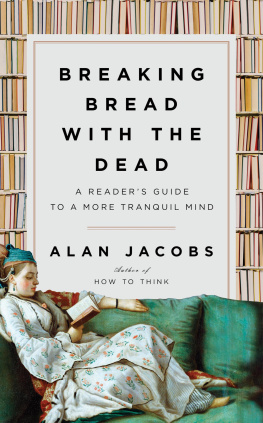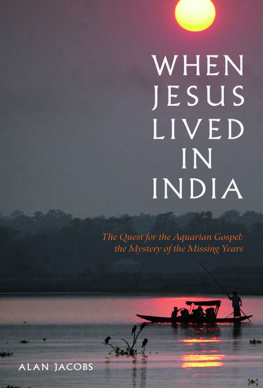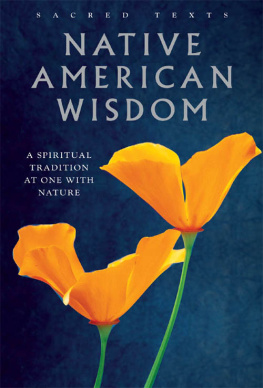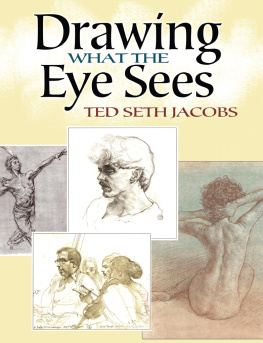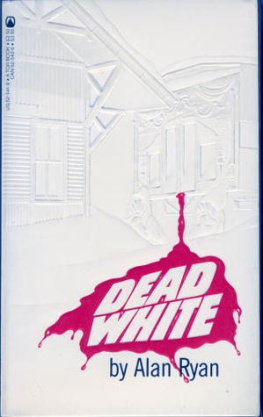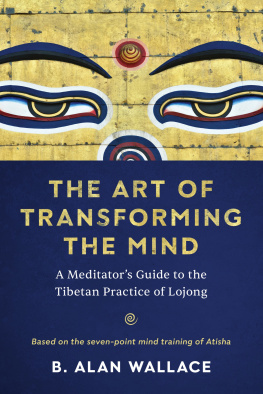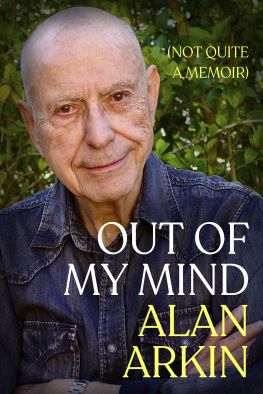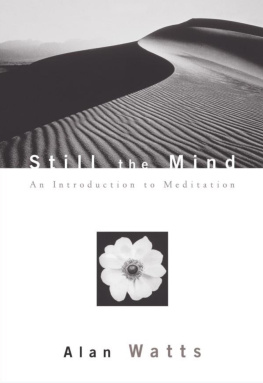Alan Jacobs - Breaking Bread with the Dead: A Guide to a Tranquil Mind
Here you can read online Alan Jacobs - Breaking Bread with the Dead: A Guide to a Tranquil Mind full text of the book (entire story) in english for free. Download pdf and epub, get meaning, cover and reviews about this ebook. year: 2020, publisher: Penguin Press, genre: Romance novel. Description of the work, (preface) as well as reviews are available. Best literature library LitArk.com created for fans of good reading and offers a wide selection of genres:
Romance novel
Science fiction
Adventure
Detective
Science
History
Home and family
Prose
Art
Politics
Computer
Non-fiction
Religion
Business
Children
Humor
Choose a favorite category and find really read worthwhile books. Enjoy immersion in the world of imagination, feel the emotions of the characters or learn something new for yourself, make an fascinating discovery.
- Book:Breaking Bread with the Dead: A Guide to a Tranquil Mind
- Author:
- Publisher:Penguin Press
- Genre:
- Year:2020
- Rating:5 / 5
- Favourites:Add to favourites
- Your mark:
- 100
- 1
- 2
- 3
- 4
- 5
Breaking Bread with the Dead: A Guide to a Tranquil Mind: summary, description and annotation
We offer to read an annotation, description, summary or preface (depends on what the author of the book "Breaking Bread with the Dead: A Guide to a Tranquil Mind" wrote himself). If you haven't found the necessary information about the book — write in the comments, we will try to find it.
Breaking Bread with the Dead: A Guide to a Tranquil Mind — read online for free the complete book (whole text) full work
Below is the text of the book, divided by pages. System saving the place of the last page read, allows you to conveniently read the book "Breaking Bread with the Dead: A Guide to a Tranquil Mind" online for free, without having to search again every time where you left off. Put a bookmark, and you can go to the page where you finished reading at any time.
Font size:
Interval:
Bookmark:
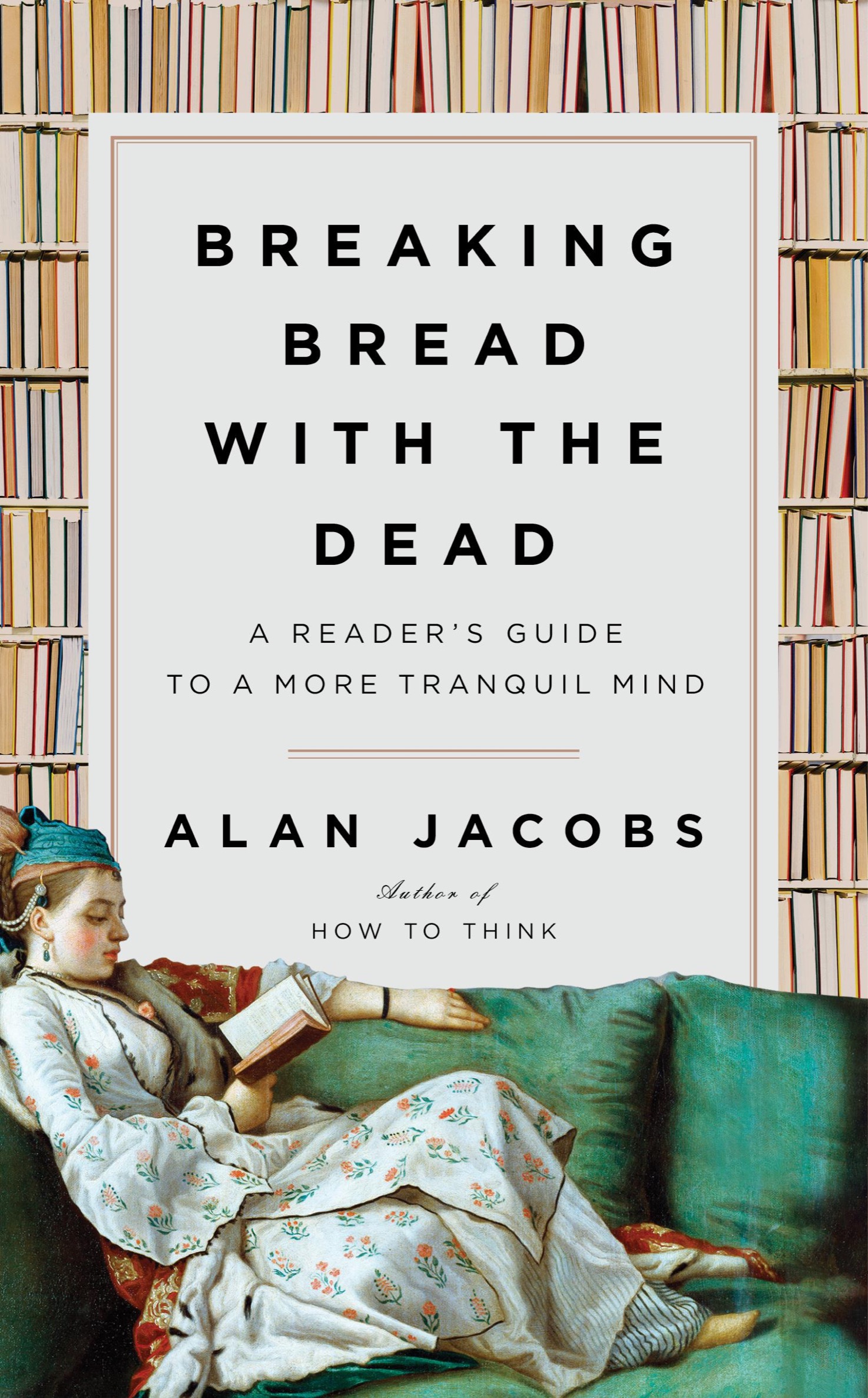
The Year of Our Lord 1943: Christian Humanism in an Age of Crisis
How to Think: A Survival Guide for a World at Odds
The Book of Common Prayer: A Biography
The Pleasures of Reading in an Age of Distraction
Wayfaring: Essays Pleasant and Unpleasant
Original Sin: A Cultural History
The Narnian: The Life and Imagination of C. S. Lewis
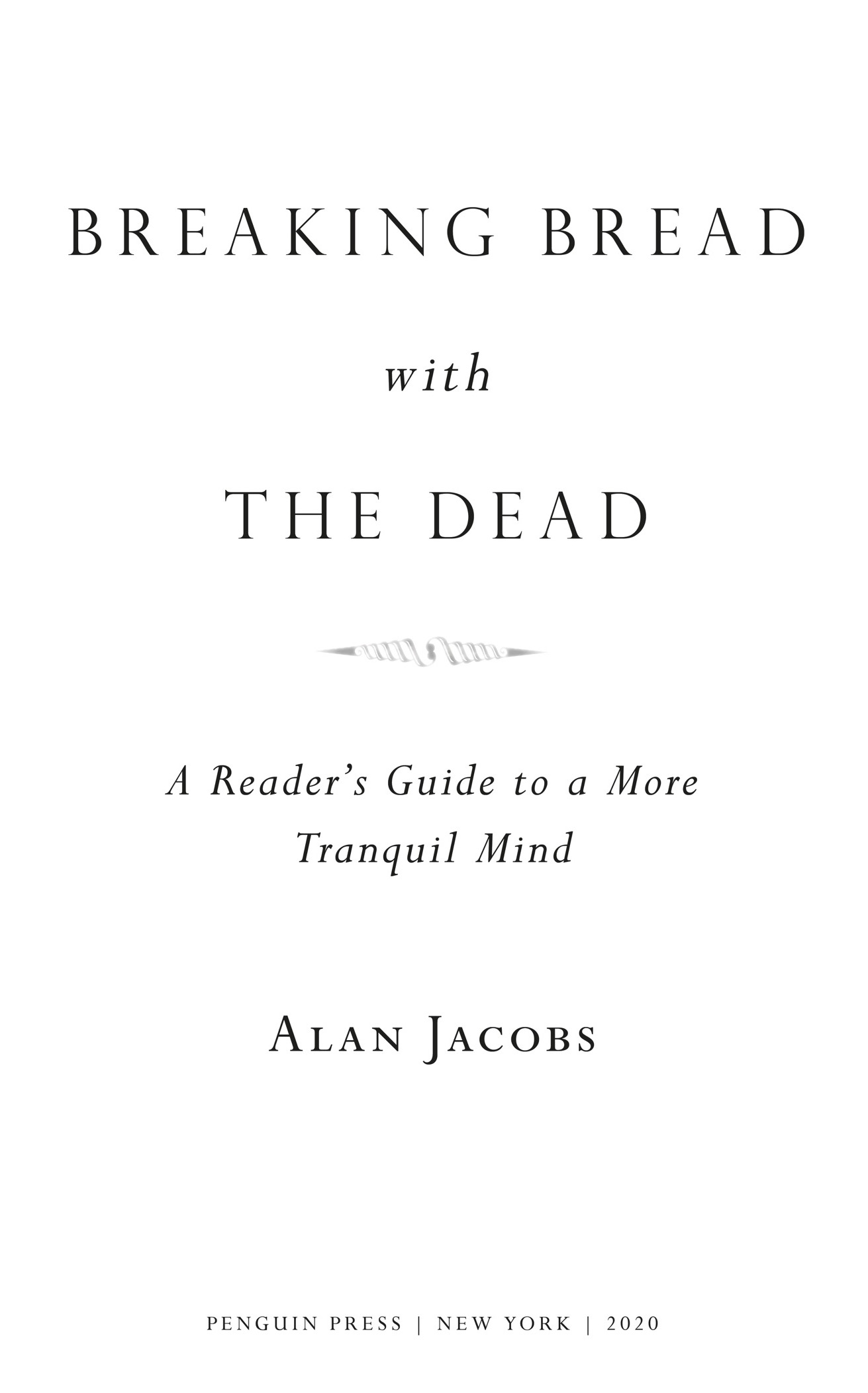
PENGUIN PRESS
An imprint of Penguin Random House LLC
penguinrandomhouse.com
Copyright 2020 by Alan Jacobs
Penguin supports copyright. Copyright fuels creativity, encourages diverse voices, promotes free speech, and creates a vibrant culture. Thank you for buying an authorized edition of this book and for complying with copyright laws by not reproducing, scanning, or distributing any part of it in any form without permission. You are supporting writers and allowing Penguin to continue to publish books for every reader.
LIBRARY OF CONGRESS CATALOGING-IN-PUBLICATI ON DATA
Names: Jacobs, Alan, 1958 author.
Title: Breaking bread with the dead: a readers guide to a more tranquil mind / Alan Jacobs.
Description: New York: Penguin Press, 2020. | Includes bibliographical references and index.
Identifiers: LCCN 2020000756 (print) | LCCN 2020000757 (ebook) | ISBN 9781984878403 (hardcover) | ISBN 9781984878410 (ebook)
Subjects: LCSH: Literature and society. | Social problems in literature. | Anxiety in literature. | Presentism (Philosophy)
Classification: LCC PN51 .J255 2020 (print) | LCC PN51 (ebook) | DDC 809dc23
LC record available at https://lccn.loc.gov/2020000756
LC ebook record available at https://lccn.loc.gov/2020000757
Cover design: Jonathan Bush
Cover images: Portrait of Maria Adelaide of France in Turkish-style clothes by Jean-tienne Liotard, c. 1753. Artepics / Alamy Stock Photo; (books in a bookshelf) Michael Kai / Getty Images
pid_prh_5.5.0_c0_r0
IN MEMORY OF BRETT FOSTER (19732015)
All of these afflictions, petty in loves gargantuan light,
provide a most ripe tinder to raise loves fire further.


Ive been a teacher for many years now, and one of the best things about teaching is the way it presses you to revisit decisions you made in decades past, to defend and explain actions that for you long ago ceased to need defense or explanation. What you find precious strikes some, or all, of your students as wholly without value; and they want to discuss matters in class that if you had your way youd never consider again. Nevertheless, there you all are, stuck in the same room together several hours a week, for a dozen or more weeks.
Its possible, of course, if youre the teacher anyway, simply to ignore the problem and do Your Thing as you define Your Thing. In this context I think often of one of my former teachers, who commented that he had taught a particular course for so many years, and taught it in precisely the same way, that he often had a sensation, when he was in the middle of a lecture he knew by rote, that he could stroll right out of the classroom and his voice would simply continue droning its familiar drone until the appointed words were all said.
I vowed when I first heard this story that I would somehow avoid this dreadful fate, and that vow commits me to noticing when my students are and are not paying attention, when theyre puzzled, when theyre annoyed, when theyre bored. It commits me to answering them as faithfully as I can when they wonder (either openly or covertly) why we do what we do, read what we read, ask what we ask. And I am very glad that I made that vow, because it has prevented me from settling prematurely on easy and facile accounts of my calling as a teacher.
Among the fruits of that vow has been a series of books, of which this is the third, that attempt to communicate to the general reader much of what I have learned over the years by taking my students questions and boredom seriously. The first is called The Pleasures of Reading in an Age of Distraction, and the second is called How to Think, and now here we are discussing the value of paying attention to old books that come from strange times and are written in peculiar language and frankly dont make a whole lot of sense. Much of what I have to say here is what I have tried to convey to my students, though rarely in terms as explicit as I lay out here. Maybe some of my former students will read this book and think, Oh, thats what he was up to.
I write here not as a teacher to students but rather as a reader to other readers, a citizen to other citizens. I write because I think I have learned a few things in my teaching life that are relevant to our common life. You will see what those are if you read on.
My approach here is anything but systematic. Of all the literary genres, I am fondest of the essay, with its meandering course that (we hope) faithfully represents the meanderings of the human mind. Like the poet Yeats, I often find that thought, and indeed life as a whole, is like a winding stair: you keep revisiting the same points, the same themes, but at higher levels of experience. From those ascending vantage points a given idea, a given feeling, a given perception, is recognizably itself and yet somehow different. Ones understanding of it becomes richer, sometimes in ways that are continuous, sometimes in ways that are revolutionary. I have tried to mimic that spiraling ascent in the pages that follow. A theme or notion is introduced, considered, droppedand then picked up again later in light of additional readings, further reflections. Certain images and events and people will recur throughout this book, returning perhaps when you think were done with them. I write this way because none of the things I care about most have ever proven susceptible to systematic exposition.

Sometimes I teach old books to young people, and recently I was teaching the Epistles of the Roman poet Horace to a group of undergraduates. For many centuries there were few authors more widely read than Horace, though to be fair most of the readers were boys forced to translate him from Latin when they would far rather have been playing some kind of ball game. Some old dude sitting in a farmhouse writing rhythmical letters to friendsthis was not exactly a recipe for delight.
Maybe my studentsmostly young women, these daysalso thought they had better things to do. But then we got to one of the Epistles, addressed to one Lollius Maximus, in which Horace wonders how one might acquire a tranquil mind.
A tranquil mind. Who doesnt need that?
Often at the beginning of a class I will give my students a brief reading quizunannounced in advance; yes, Im that kind of teacherwhich has the salutary effect of making sure that everyone is in class on time. The room is always full when I walk in, and fairly regularly the first thing I see is every head bowed before a glowing screen. Sometimes they dont even look up when I say hello. Often their brows are furrowed; they may look anxious or worried. They dutifully put their phones away as soon as class begins, whether it does so with a quiz or a question, but during the discussion I occasionally see hands twitch or reach toward bags. If I see phones left on the seminar-room table I lightly (but seriously) suggest that they be put away to minimize temptation. All my students have mastered the art of packing up their bags at the end of class with one hand while checking messages with the other. They leave the room with heads once more down, and brows once more furrowed, navigating like a blind person through her familiar living room.
Font size:
Interval:
Bookmark:
Similar books «Breaking Bread with the Dead: A Guide to a Tranquil Mind»
Look at similar books to Breaking Bread with the Dead: A Guide to a Tranquil Mind. We have selected literature similar in name and meaning in the hope of providing readers with more options to find new, interesting, not yet read works.
Discussion, reviews of the book Breaking Bread with the Dead: A Guide to a Tranquil Mind and just readers' own opinions. Leave your comments, write what you think about the work, its meaning or the main characters. Specify what exactly you liked and what you didn't like, and why you think so.

